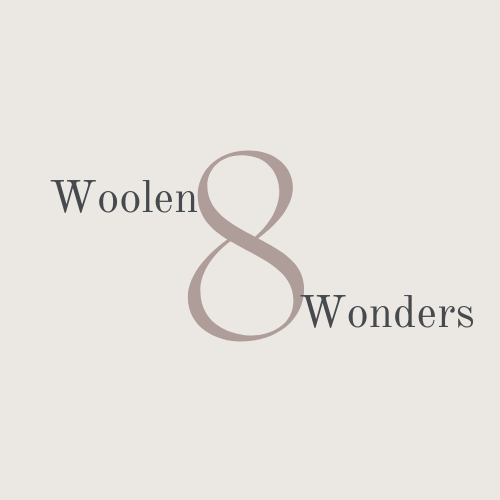Anúncios
Crochet, once confined to the realm of traditional handicrafts, emerged as a silent but strong storyteller in the ever-evolving narrative of fashion. It transcended its utilitarian origins to become a canvas for creativity, reflecting the spirit of each era it embraced. This article serves as a portal into the intricate patterns, vibrant hues, and the cultural zeitgeist that defined crochet across three iconic decades – the 60s, 70s, and 90s. The journey into retro crochet is not merely a stroll down memory lane; it’s a dynamic analysis of how a simple hook and yarn transformed into a means of self-expression, rebellion, and artistic analysis. As we unravel the threads of this narrative, we invite you to witness the evolution of crochet from a craft to a cultural phenomenon, understanding its nuances, appreciating its adaptability, and celebrating its enduring allure.
Evolution of Crochet Fashion
Crochet’s journey through the annals of fashion history is a fascinating tale of transformation. Originating as a traditional craft, crochet gradually found its way into mainstream fashion, undergoing a metamorphosis from humble beginnings to becoming a symbol of creativity and self-expression. The 60s, 70s, and 90s played pivotal roles in shaping crochet into a versatile and enduring fashion choice. The 1960s marked a period of cultural revolution, and crochet became a medium for individuals to express their newfound freedom. Crochet dresses, characterized by bold patterns and intricate designs, became emblematic of the era. From mini skirts to bohemian-inspired vests, the 60s set the stage for a crochet revolution that would echo through the decades. The 60s crochet aesthetic was diverse, reflecting the cultural shifts of the time. Granny squares adorned not just afghans but also stylish garments. Crochet patterns featured geometric shapes, flowers, and psychedelic motifs, mirroring the era’s vibrant and experimental spirit. As we analyze the 60s crochet scene, it’s evident that the decade left an indelible mark on the world of fashion.
The 1970s witnessed a crochet renaissance, with the craft becoming synonymous with the bohemian lifestyle. The free-spirited nature of the 70s was perfectly encapsulated in crochet garments, which embraced loose-fitting silhouettes and earthy tones. Crochet tops, vests, and shawls became essential elements of the boho-chic wardrobe, representing a fusion of fashion and counterculture. Bohemian icons like Stevie Nicks popularized the crochet look, inspiring a generation to embrace handcrafted, artisanal pieces. The 70s crochet scene was characterized by the use of natural fibers, fringe details, and an overall laid-back vibe. This section analyzes the key elements that defined the 70s crochet renaissance and its lasting impact on contemporary style.
While the 90s are often remembered for grunge and minimalism, crochet made a surprising comeback, adding a touch of nostalgia to the fashion landscape. The resurgence of interest in handmade crafts and DIY culture contributed to crochet’s return to the mainstream. From crochet crop tops worn with high-waisted jeans to accessories like hats and bags, the 90s reintroduced crochet as a versatile and eclectic fashion choice. Celebrities like Jennifer Aniston and Gwen Stefani donned crochet pieces, further fueling the trend. The 90s revival of crochet was characterized by a mix of retro and modern elements, creating a unique aesthetic that appealed to a new generation. This section delves into the unexpected revival of crochet in the 90s and its impact on contemporary fashion trends.
Retro Crochet Patterns: A Deep Dive
The heart of retro crochet lies in its patterns, each telling a story of the era it belongs to. Vintage crochet patterns from the 60s, 70s, and 90s offer a glimpse into the diverse styles that defined those decades. Lace cocktail dresses with intricate shell stitches, bohemian blouses with wide necklines, and accessories adorned with unique motifs are just a few examples of the rich tapestry of retro crochet patterns.
Anúncios
As we dive into the world of retro crochet patterns, it becomes evident that craftsmanship and attention to detail were paramount. Each pattern carries the essence of its era, reflecting the fashion sensibilities and cultural influences of the time. This section analyzes specific retro crochet patterns, decoding the techniques and designs that continue to inspire contemporary makers and fashion enthusiasts.
DIY Crochet: Recreating the Retro Vibes
For those captivated by the charm of retro crochet, the world of do-it-yourself (DIY) offers a gateway to recreating the vibes of the past. This section serves as a guide for enthusiasts looking to embark on a creative journey, providing insights into sourcing vintage patterns, selecting yarns, and incorporating modern twists into retro-inspired projects. Recreating 60s to 90s crochet styles involves more than just following patterns; it’s about infusing personal creativity and making each piece a unique expression. From crochet dresses that channel the spirit of the 60s to modernizing bohemian blouses inspired by the 70s, DIY crochet allows individuals to be both creators and curators of their style. This section fortifies readers to embrace the art of crochet and make it their own.
Showcasing Retro Crochet on Pinterest
In the digital age, platforms like Pinterest have become treasure troves for inspiration, and retro crochet is no exception. This section analyzes the vibrant world of Pinterest boards dedicated to “Retro Crochet: Styles from the 60s to 90s.” From curated collections of vintage patterns to user-generated boards featuring completed projects, Pinterest serves as a visual feast for crochet enthusiasts seeking ideas and community connection.
Anúncios
Navigating through these Pinterest boards unveils a kaleidoscope of colors, textures, and designs, offering a virtual journey through the decades. Whether you’re a seasoned crochet artist or a novice looking for inspiration, Pinterest provides a dynamic space for sharing, discovering, and celebrating the timeless allure of retro crochet. This section guides readers through the Pinterest landscape, highlighting key boards and trends within the retro crochet community.
Collecting Vintage Crochet & Knitting Books
The preservation of crochet history is intricately woven into the pages of vintage crochet and knitting books. This section analyzes the significance of these books, which serve as time capsules of fashion trends, patterns, and techniques from the 1960s, 1970s, and 1990s. Collecting and cherishing these books not only pays homage to the craftsmanship of the past but also provides a valuable resource for contemporary makers seeking authentic inspiration.
Vintage crochet and knitting books offer a glimpse into the evolution of techniques, styles, and cultural influences that shaped each era. From novelties and afghans to cardigans and accessories, these books house a wealth of knowledge waiting to be rediscovered. This section encourages readers to analyze the world of vintage pattern books, fostering a deeper appreciation for the artistry and heritage of crochet.
Rediscovering Crochet Techniques: Timeless Artistry
Delving into the world of crochet is not just a journey through fashion but also an analysis of timeless artistry and techniques. Each era brought forth distinct crochet methods, from the meticulous lacework of the 60s to the free-form and experimental approaches of the 70s. This section offers a deep dive into the craftsmanship behind retro crochet, highlighting the techniques that define each period. Understanding these techniques not only enriches the creative process but also fosters a deeper connection to the historical roots of crochet.
The 60s, known for its intricate patterns, introduced techniques like broomstick lace and filet crochet, adding sophistication to crochet creations. Moving into the 70s, the emphasis shifted to freeform crochet, embracing irregular shapes and textured stitches. Finally, the 90s witnessed a fusion of traditional crochet with innovative techniques, such as Tunisian crochet and tapestry crochet, pushing the boundaries of what could be achieved with yarn and a hook. Unraveling these techniques provides a holistic perspective on the artistry embedded in retro crochet.
Crochet Icons Through the Decades
As we analyze “Retro Crochet: Styles from the 60s to 90s,” it’s essential to acknowledge the influence of crochet icons who left an indelible mark on each era. This section pays homage to the trailblazers whose fashion choices and contributions to crochet culture continue to resonate. From celebrities who popularized crochet on the red carpet to designers who redefined the boundaries of the craft, these icons shaped the narrative of crochet fashion. The 60s introduced us to style mavens like Audrey Hepburn, who elegantly adorned crochet dresses, setting the tone for a decade of sophistication. Moving into the 70s, Stevie Nicks emerged as a bohemian crochet dress, embodying the free-spirited essence of the era. In the 90s, Winona Ryder and Kate Moss showcased how crochet could seamlessly blend with grunge and minimalism. Understanding the influence of these crochet icons provides insights into the broader cultural context of each decade and the enduring impact of their fashion choices.
Contemporary Fusion: Retro Crochet in Modern Fashion
While “Retro Crochet: Styles from the 60s to 90s” offers a nostalgic journey, the influence of retro crochet extends into contemporary fashion. This section analyzes how designers and fashion enthusiasts are infusing retro crochet elements into modern aesthetics, creating a fusion that pays homage to the past while embracing the present. Contemporary designers often draw inspiration from the iconic silhouettes and patterns of the 60s to 90s, reinterpreting them in innovative ways. Runways feature crochet maxi dresses with a modern twist, crochet accessories making a statement, and even crochet-inspired streetwear that blends vintage charm with urban edge. The section highlights the seamless integration of retro crochet into the dynamic landscape of modern fashion, showcasing its enduring relevance and adaptability.
Outcome
In the culmination of our odyssey through “Retro Crochet: Styles from the 60s to 90s,” it is evident that crochet is not just a craft; it is a living, breathing narrative that traverses the corridors of time, intertwining history, artistry, and individuality. As we bid adieu to the intricate patterns, iconic silhouettes, and cultural imprints of the past, we find ourselves standing at the crossroads where tradition meets contemporary innovation.
The allure of retro crochet extends beyond its aesthetic appeal; it is an invitation to participate in an ongoing conversation that spans generations. The meticulous techniques of the 60s, the free-spirited icons of the 70s, and the unexpected revival in the 90s converge in a harmonious blend, leaving an indelible mark on the canvas of fashion. It beckons us not only to appreciate the legacy of crochet but also to infuse it with our individual creativity, contributing new chapters to its ever-evolving story. As we conclude this analysis, “Retro Crochet” remains not just a celebration of the past but a testament to the resilience and adaptability of a craft that continues to captivate hearts. Whether you are a seasoned artisan, a novice with a crochet hook, or simply an appreciator of timeless fashion, the outcome is an open door. It invites you to carry the torch forward, incorporating retro crochet into your personal style, and becoming a part of the ongoing narrative that transcends trends and fads.
So, let the echoes of the past resonate in your creations, let the patterns of yesteryears be your muse, and let the spirit of retro crochet be a guiding light in your own sartorial journey. As we take our leave from this analysis, we extend an invitation to you, dear reader, to pick up the threads and continue weaving the story of crochet – a story that knows no bounds and thrives in the hands of those who cherish its timeless beauty.



